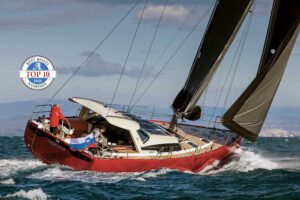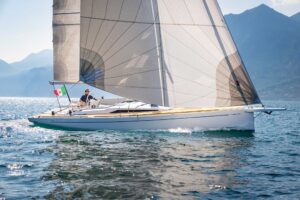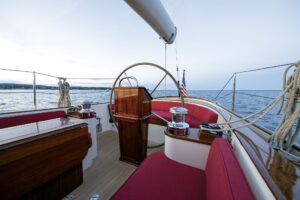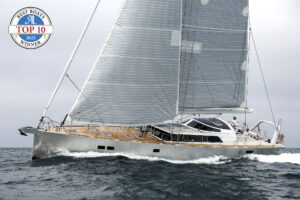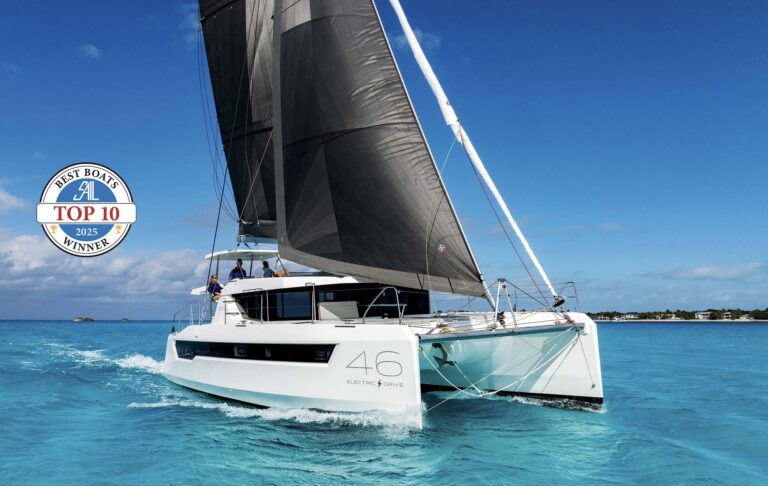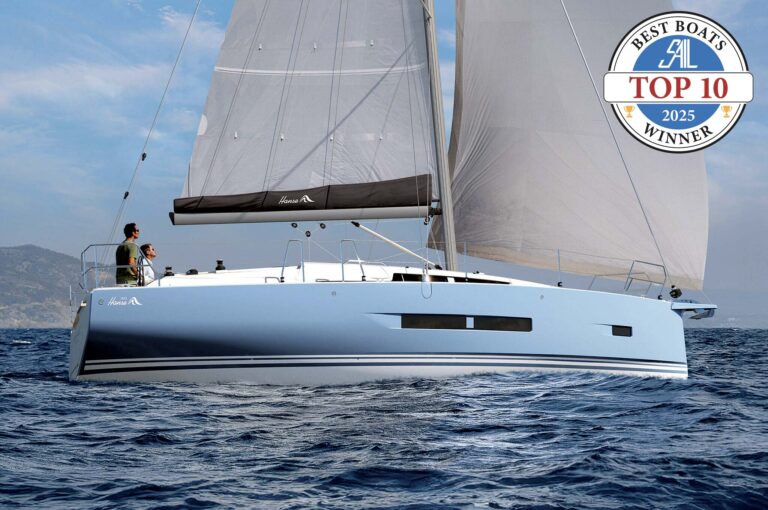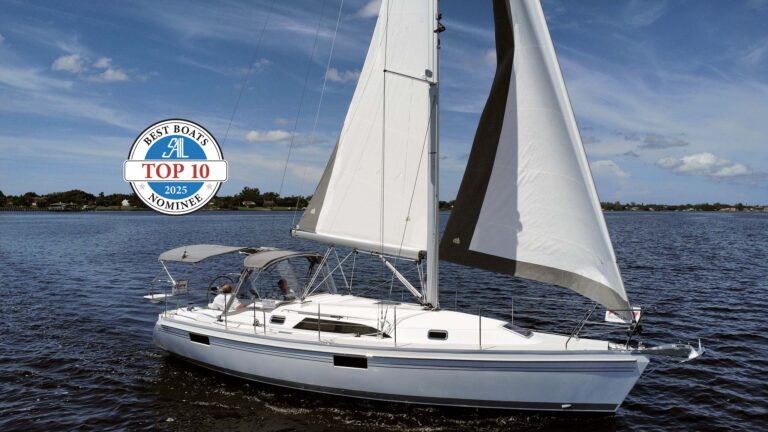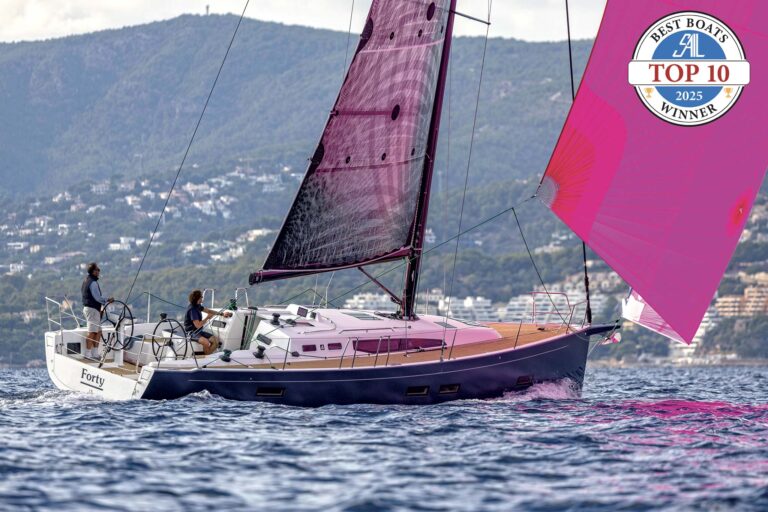An important part of the Sage 17’s pocket-cruiser DNA became evident the moment I deliberately stepped onto her rail with my full weight—and nothing much happened. The rail dipped slightly and lived up to the notion of designer Jerry Montgomery, long a member of the pocket-cruiser set, that this tiny boat should heel to 10 degrees and stiffen up. If we’re going cruising, we want to feel secure.
Through the years, any number of people, young or old, have gone off cruising in boats not much longer than their prone bodies. Stability is not absolutely required but in the contemporary parlance of “pocket cruising,” stability and a cozy bit of shelter anchor the conversation.
The lack of breeze, however, was a big topic of conversation when I hoisted sails on Sage 17 hull #1 amidst catspaws on San Francisco Bay. I could see that I wasn’t going to come away with a notebook full of tacking angles and speeds. But I also knew I didn’t need numbers to share what needs to be shared about this boat. And before the day was out, we found just enough breeze to prove that the boat sails fine, with a nice turn of speed, and that the 7/8ths rig, with its working jib and loose-footed main, hauls her to weather quite nicely.
The working jib on the Sage 17 sheets inside the lifelines to promote pointing ability. Genoa tracks are an option for those who want a bigger headsail, and the standard backstay adjuster and traveler tell you that the boat is intended to reward savvy sailing.
I’ve already described the boat as stiff: credit hull form, plus 400 pounds of lead in the keel and 120 pounds in the centerboard. There is also the lightweight balsa-cored carbon-fiber deck, which is so strong the mast requires no compression post, thereby leaving the cabin open and clear. The carbon transom also helps lighten the stern.
The balsa-cored vinylester hull is lapstraked for added rigidity. The cabin works. You expect it to be tight, and of course, it is, but the V-berth provides 80 inches to stretch out on, and seating just below the companionway makes it possible for six-footers to sit, port and starboard. What more can you ask for in 17 feet?
The head is tucked under the aft portion of the V-berth, the forward part of which can be packed with one portion of the optional flotation package. I approved of small, smart touches, such as the way the hatch lockers can be dogged down from the interior.
On our test boat, the optional Tiller Clutch made it a cinch to lock off the helm, and with its pivoting centerboard and kick-up rudder, the Sage 17 inspires confidence in shoal water. It’s easy to like this boat. Anyone looking for a pocket cruiser more or less like this little one should ask for a dance.
Specifications
LOA 16ft 10in // LWL 15ft 7in // BEAM 6ft 9in
DRAFT 1ft 9in (board up); 3ft 6in (board down)
DISPLACEMENT 1,300lb
SAIL AREA 152ft2 (main and jib)
DESIGNER Jerry Montgomery
BUILDER Sage Marine, Golden, CO, 800-621-1065
PRICE $22,000 (with trailer)
Photo Courtesy of Debra Colvin

